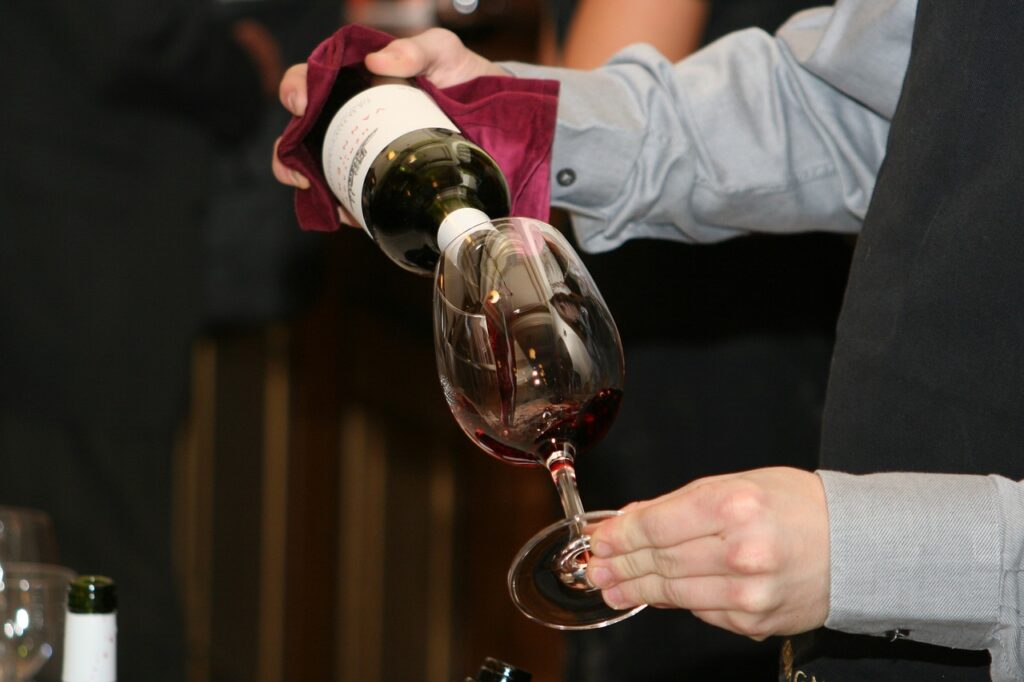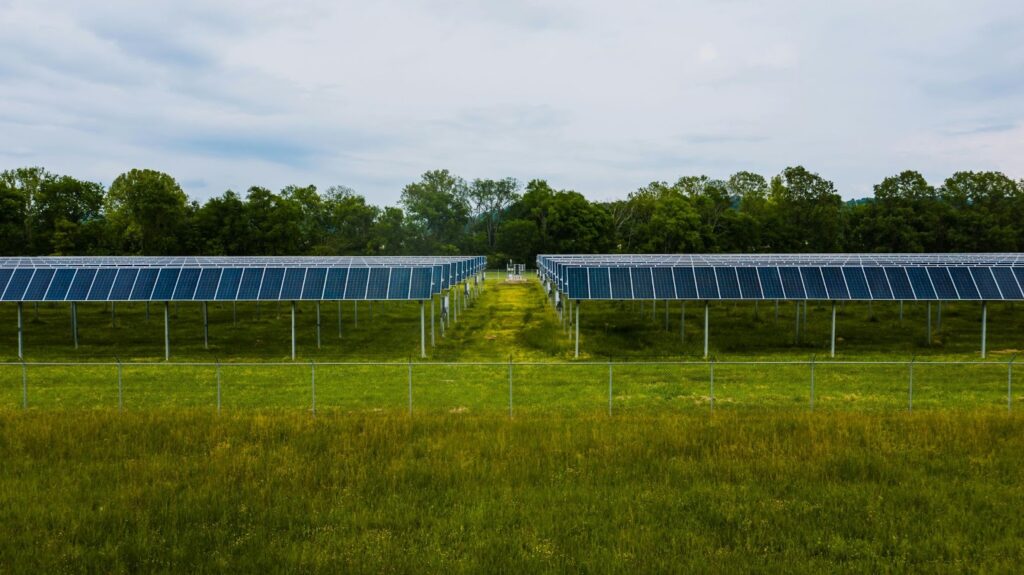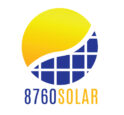
Colorado’s wine industry is one of the state’s best-kept secrets. The western slope of the Rocky Mountains and the state’s abundant sunshine provide an ideal environment to grow a surprising variety of grapes.
Over 150 wineries are operating in Colorado, producing Cabernet Sauvignon, Merlot, and Syrah if you’re on the red side, and Chardonnay, Viognier, and Riesling if your preference is white.
When you consider what goes into turning the grape into a beverage, you can start to understand just how much electricity is required. Everything from the fermentation process to refrigeration requires power, and that’s before you factor in your ventilation, lighting, and heating systems.
No one is expecting energy bills to drop anytime soon, which puts financial pressure on Colorado’s agriculture as a whole. If we want Colorado’s wine industry to continue thriving, we must find solutions that provide a cheaper and more sustainable way to produce wine.
Solar energy can play an integral role in achieving this, and in this article, we explain exactly why.
In a Nutshell
- Solar energy can result in a 96% energy bill reduction.
- Energy prices are set to increase. Solar energy will protect you from this additional expense.
- The resilience solar energy provides will protect your winery from power blackouts and the resulting produce losses.
- Solar energy has the potential to reduce a vineyard/winery’s carbon footprint by 72%.
- If you run wine tours, you’ll be pleased to hear that tourists are willing to pay more for sustainable activities and accommodation – something that solar energy provides.
- Installing solar panels above your grape vines can produce better, healthier, and more robust grape harvests.
The Benefits of Solar Energy for Colorado Vineyards and Viticulture
Reduce Winery Running Costs

A winery is an energy-intensive business. Fortunately, we’ve moved on from crushing the grapes with our feet, but that means we now rely on motorized equipment for just about everything from powering irrigation systems to harvesting and processing the grapes into wine.
According to Esource, a winery’s energy consumption breakdown looks like this:
- Refrigeration: 39%
- Processing equipment: 24%
- Lighting: 14%
- Compressed air: 8%
- Heating and cooling systems: 7%
- Other: 8%
This consumption doesn’t take into account the electricity used in the vineyards for powering irrigation systems, and if you have a large vineyard, the costs can be substantial.
As you can see, the majority of the power is dedicated to refrigeration and keeping the wine at a constant temperature and humidity so that it ages into a drinkable beverage. This is essential if you want a sellable product at the end of the process.
The amount of power required to run a vineyard and winery is going to eat into your profits. While you might produce wine for the love of it, you also need to make a decent living from it.
Solar energy presents a way to significantly reduce your energy bills. This can be as much as 96% if you remain connected to the grid.
How much would your business gain in profitability if you removed 96% of your electricity costs?
Furthermore, this clean, sustainable energy source is continuous. Solar panels have incredible longevity, and most are guaranteed for 25 years. However, if maintained well, they will very often exceed this lifespan beyond 30 years, although they will drop slightly in efficiency along the way.
Protect From Future Energy Price Increases

Looking at the historical trends of energy prices, we can safely assume that they are going to continue on their upward trajectory.
The past couple of years have been particularly frustrating as utility providers – most notably Xcel Power – have continued to pile on increased costs.
In fact, if you are a customer of Xcel, you probably already noticed that your energy bill has increased yet again. This is because the company successfully secured another rate increase of 4.4% that took effect in September 2023. This is on top of the 6%+ increase that already happened in April 2023.
The future for energy bills doesn’t look like a whole lot of fun, and this puts additional pressure on Colorado’s agricultural industry, which is already struggling with increased production costs.
We ran the numbers and discovered that the average industrial electricity bill has increased by 41% since 2017! And if they continue rising by the average rate growth of 2.6%, the figures will look very scary in the coming years:
- A vineyard/winery paying $3,500/month in 2023 will be paying $54,280 annually in 2030
- A $7,500/month bill in 2023 will rise to $116,335 annually in 2030
- A $10,000/month bill in 2023 will rise to $155,104 annually in 2030
On the other hand, if you’ve invested in solar, you will have already reduced your energy bills by a significant amount, which means you’ll be only slightly affected by energy cost increases. Moreover, if you’ve also installed solar batteries for 100% independence from the grid, you don’t even have to worry about energy bills – regardless of what they cost!
Provide Energy Resilience

The majority of a winery’s electricity is spent on refrigeration systems. As long as the grid is delivering power to your business, everything is fine, but what happens if there is a blackout?
- How long can you go without electricity before your precious wine starts to spoil?
- How quickly would your vines die if you were unable to power your irrigation systems?
- How many bottles of wine would you lose?
- How much money would you lose?
While blackouts in Colorado are not as commonplace as they are in other states such as California, it’s very likely that we will see an increase in the coming years.
Hotter than average summers, an influx of people arriving into the state, and an aging grid infrastructure puts increasing pressure on the grid. This pressure will eventually cause it to start failing on a more frequent basis.
Investing in solar provides you with resilience and protection from grid-based power outages.
We can guarantee that there will be daylight every day, which means your solar panels will continue to harvest energy no matter what.
It’s important to note that solar panels don’t need full sunshine to be effective. While they won’t be as efficient, they still convert light into electricity even during cloudy periods.
And if you are worried about having to rely on the grid during the hours of darkness (when the panels are ineffective), you can invest in solar batteries, which will give you full independence from the grid and maximum resilience.
Reduce Carbon Emissions

The US government is firmly pushing forward with its target to achieve a net-zero carbon emissions economy by 2050. Eventually, all businesses will be required to source their power from renewables.
By investing in solar now, you’ll be ahead of the game.
You can also rest easy knowing you are playing your part in leaving a cleaner, greener planet for future generations.
According to the Australian Wine Research Institute, a whopping 72% of a winery’s carbon emissions come from its energy consumption. So if you’ve gone solar, you’ll have reduced your carbon footprint by this amount. That’s a big impact for a relatively small change.
Creates Sustainable Tourism Opportunities

Vineyards and wineries have long been attractive places for tourists to visit. Sampling the wine over a picnic while gazing out across the fields of vines holds a special allure and a lucrative opportunity for your business.
More and more, people are seeking out sustainable or eco-friendly experiences. If you can claim your vineyard is run entirely on solar power, you will be appealing to these individuals.
According to Statista, over 80% of travelers surveyed said that sustainable tourism is important to them. And these statistics by Passport-Photo-Online claim that 60% of travelers are open to paying more to businesses that prioritize sustainability and about 70% are willing to pay more for sustainable accommodation.
If you run wine tours and tasting sessions and host events such as weddings, you can start promoting them as sustainable as soon as you switch your solar panels on. And going by the statistics – you can charge more for them too!
Provides Affordable and Flexible Irrigation

Irrigation in large vineyards can be challenging. To pump the water to where it is needed most, you require power.
For grid-connected irrigation systems, you are constricted to where the power lines reach, or you are forced to lay extremely expensive cabling to where it’s needed.
If your irrigation system relies on generators, then you will already be familiar with how costly these are to run, not to mention how noisy and polluting they are. Plus, generators can and do break down, which increases the amount of time you have to spend maintaining them.
A solar-powered irrigation system affords you way more flexibility. Solar panels can be placed anywhere they have access to sunlight, so if you are using them for your irrigation system, you have a lot more choice over where to place them.
Solar panels can even be placed across irrigation ditches or laid flat across bodies of water (floatovoltaics). This can have the double benefit of powering your irrigation pumps while reducing water evaporation from your water source.
And with a more flexible system, you can deliver water to the areas that need it most in a more precise and controlled manner. This ensures even coverage of your grape crop and reduces water waste too.
Moreover, solar energy frees you from the use of generators and grid reliance. By installing solar batteries, you can ensure your irrigation has a steady stream of power whenever you need it.
Combine Grapes and Solar Power Together (Agrivoltaics)

Agrivoltaics is the practice of combining farming and solar panels on the same plot of land. It is widely practiced in Europe and Asia and is finally starting to catch on in the USA.
Installing solar panels above grapevines, however, is a relatively new practice with several schemes underway in France – an area where its sensitive vines are being negatively affected by climate change.
The effects of heatwaves, unusually heavy rainfall, and frosts change the grapes in the following ways:
- The sugar content in the grapes increases rapidly, forcing early harvesting before they have reached phenolic maturity.
- The acidity levels of the grape don’t reach the desired quantity.
- Increased levels of water stress result in qualitative changes and stunted growth.
- Vine budding occurs earlier in the year, making the crop vulnerable to spring frosts.
An agrivoltaics project developed by Sun’Agri situated in Vaucluse, France, has shown extremely promising results.
The 280-panel agrivoltaic system covers an area of 6,458 square feet and provides essential shade for the grenache grapevine. The panels sit just over 13 feet off the ground and have 6.5 feet worth of clearance between each row of panels.
Through the use of this system, the vines:
- Are more resistant to heatwaves and don’t cease growing during hot periods (a natural reflex of vines in hot weather)
- Retain more moisture and require 12% to 34% less watering
- A 13% increase in anthocyanins raising the grape’s aromatic profile
- A 9% to 14% increase in acidity
In Toledo, Spain, Iberdrola has installed the country’s first smart agrivoltaics system for the area’s Grupo Emperador vineyards. The layout of the modules is adapted to the unique needs of the vineyard while artificial intelligence moves the panels throughout the day for optimum positioning.

As the effects of climate change start being felt across the USA, it’s going to become necessary to find ways to save crops, and agrivoltaics is proving to be an extremely promising solution.
Besides, this practice doesn’t force farmers to choose between giving up their land for solar panels or continuing to use it for farming.
By combining the two on the same piece of land, you are doubling its efficiency, doubling the potential for profits (selling your excess solar power and the crops themselves), and protecting your crop for a higher-quality yield.
Talk to 8760 Solar for More

When it comes to the benefits of solar energy for Colorado’s agricultural industries, there’s so much more to talk about.
We haven’t even covered the numerous financial incentives and tax credits available that vastly reduce the upfront cost of installing a solar system. These include a REAP grant of up to 50% of the cost of your solar system and a 30% federal tax credit. These can even result in over 100% return on investment in the first year alone!
If you run a vineyard and winery in Colorado and are interested in solar energy, then our team at 8760 Solar would love to speak with you.
We specialize in solar for Colorado’s farms and agricultural businesses, so we have precisely the right experience and expertise to determine the best setup for your business.
It all starts with a thorough analysis of your premises and land, which allows us to determine what type and size of solar energy system you need, and then we’ll take it from there. We’ll even help you take advantage of the aforementioned financial incentives.
To get in touch with the 8760 Solar team, text “READY” to 719 470-0254 or contact us via email: sales@8760solar.com. We’ll call you back for a chat right away.
Frequently Asked Questions
How Can Solar Energy Save My Winery Money?
Solar energy has the potential to save up to 96% on a monthly energy bill. Since electricity is the main source of power in wineries this can amount to substantial savings year on year.
Can I Install Solar Panels Where I Grow Grapevines?
You can absolutely install solar panels where you grow grapevines, though bear in mind they need to be installed higher off the ground so the vines can continue growing underneath.
How Can Agrivoltaics Benefit My Vineyard?
Agrivoltaics benefit your vineyard by providing much-needed shade from the harsh sun and making the air underneath the solar panels cooler during the day, and warmer during the night. This improves soil moisture and soil erosion while helping prevent water runoff.
Is Solar Energy for Vineyards Worth It?
Solar energy for vineyards is worth it. You can save significantly on your energy bills and remove your reliance on the grid, which makes your business more resilient. If you employ the use of agrivoltaics on your vineyard, you can also achieve healthier and sturdier crops.
